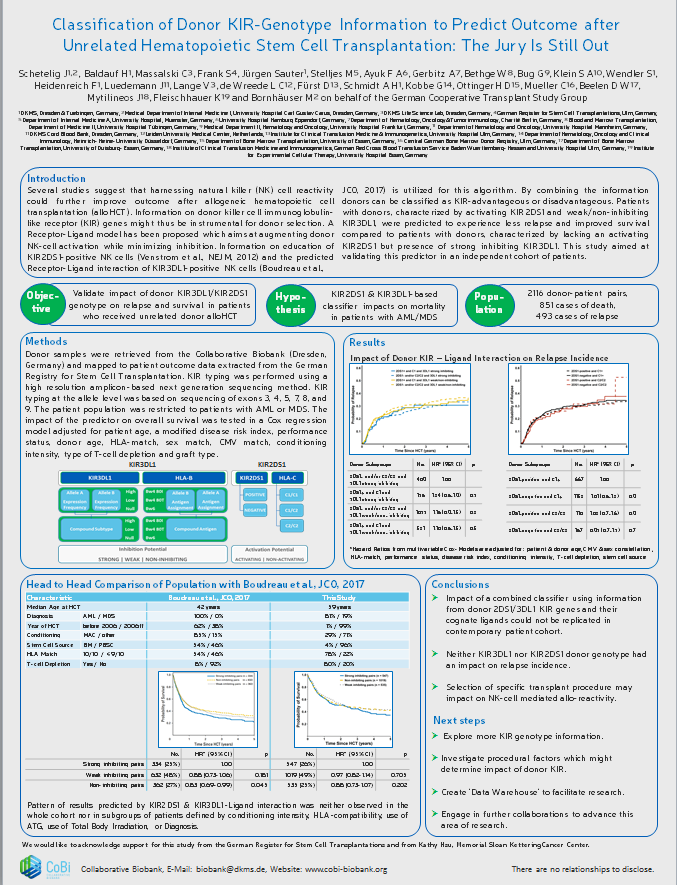- 14. December 2018
- 11:46

At the 60th meeting of the American Society of Hematology (ASH) in San Diego, California, the results of a Collaborative Biobank research project were presented in a poster session. The aim of the study was to confirm the advantage of KIR-based donor selection for the outcome of stem cell transplants. The title of the poster was “Classification of Donor KIR-Genotype Information to Predict Outcome after Unrelated Hematopoietic Stell Cell Transplantation: The Jury Is Still out”.
NK cells have the potential to kill leukemia cells. The function of NK cells is modulated by KIR receptors on the NK cell surface and by KIR interactions with their binding partners on the leukemia cells (ligands). The presence or absence of certain KIR genes or KIR alleles in stem cell donors and their ligands in patients could therefore have a decisive effect on the outcome of stem cell transplantation. The group around Katharine C. Hsu (Memorial Sloan Kettering Cancer Center) had already published a donor selection algorithm in 2017, in which information on the donor status of KIR2DS1 and KIR3DL1 as well as their predicted ligands – i.e. different groups of HLA molecules in these two KIRs – are used.
For example, the published data suggest that the risk of relapse in patients with AML (acute myeloid leukaemia) is reduced if a stem cell donor has a KIR2DS1 gene but the ligand (HLA-C2 group) is not present in two copies in the genome; in addition, the donor’s KIR3DL1 receptor with the KIR3DL1 ligand (HLA-Bw4 group) should be a weak/non-inhibitory receptor-ligand pair on the patient side.
In the study presented at the ASH Congress, Collaborative Biobank (CoBi) samples were used and linked to data on the outcome of stem cell transplantation. KIR and HLA genes were sequenced using the DKMS Life Science Lab. In the independent and significantly larger cohort (clinical data of 2314 patients) compared to that of Kathy Hsu, the influence of KIR2DS1 and KIR3DL1 could not be confirmed. It is possible that procedural aspects of stem cell transplantation (use of T cell depletion, myoablative conditioning, stem cells from bone marrow or peripheral blood, …) have an influence on the NK cell-mediated antileukemia effect. A lively visit of leading KIR and NK cell researchers in the context of stem cell transplantation showed a high interest in the presented data.
The visit to the ASH was also used to discuss the results again with Kathy Hsu, but also with other KIR researchers, and to agree on further cooperation projects. The research group around the project is optimistic that the KIR genotype information can be used to improve the results of stem cell transplantation. However, this requires some basic laboratory work and further studies which are being worked on at full speed.



























